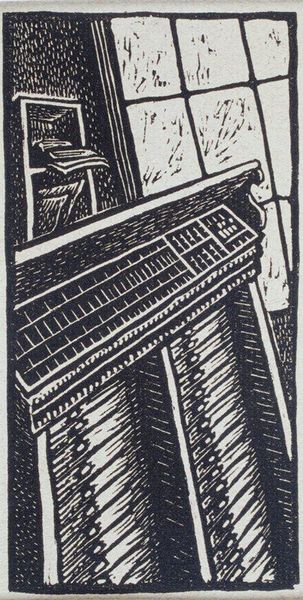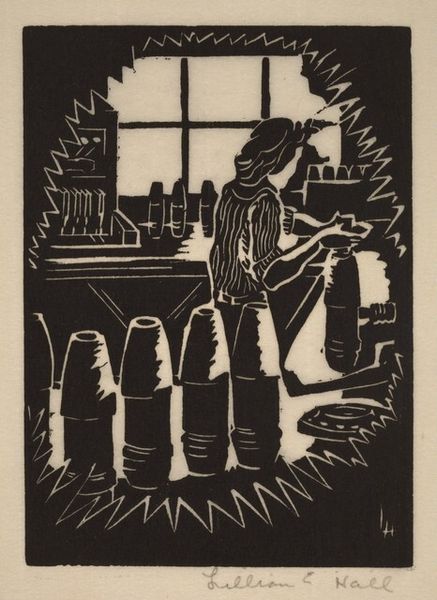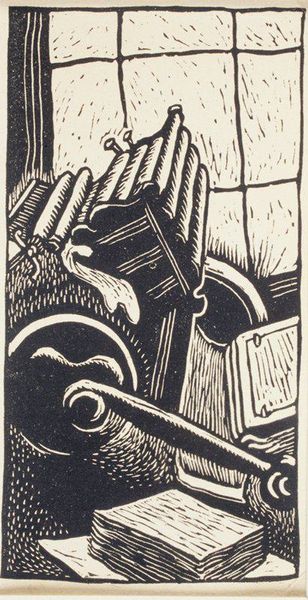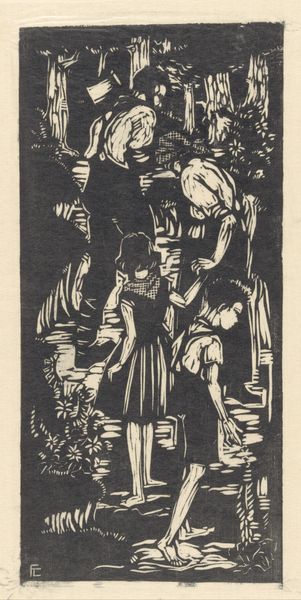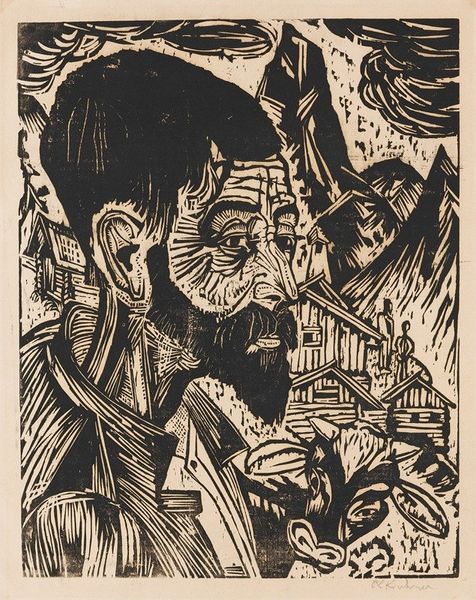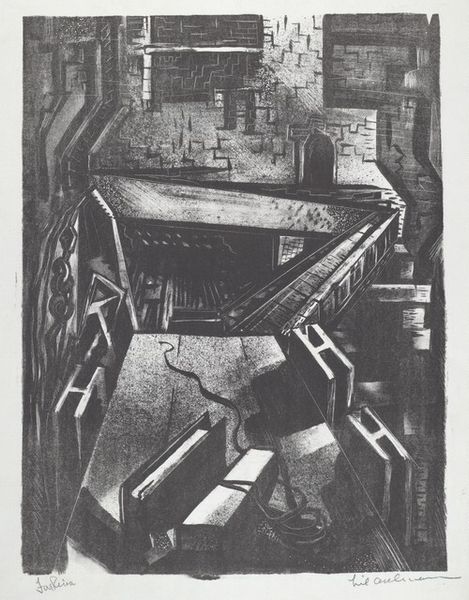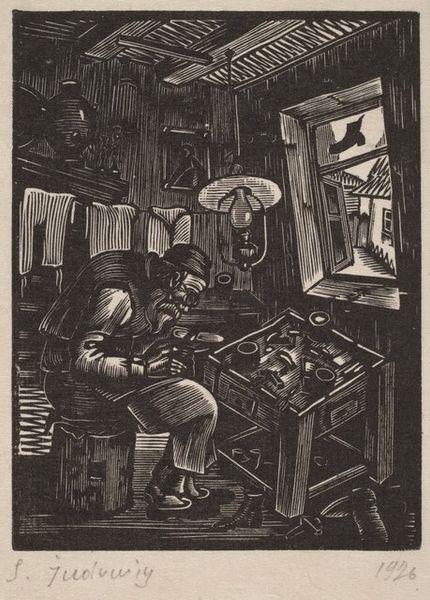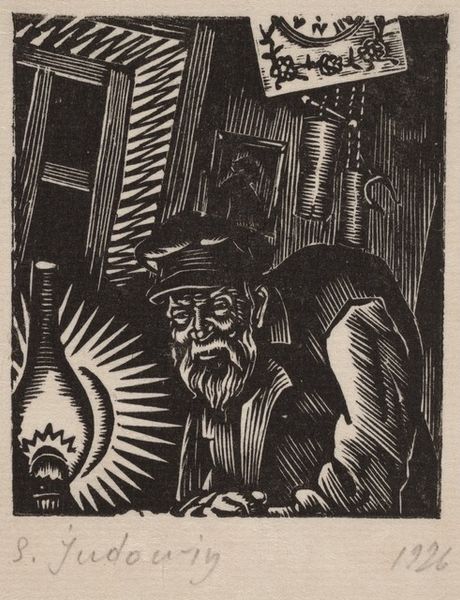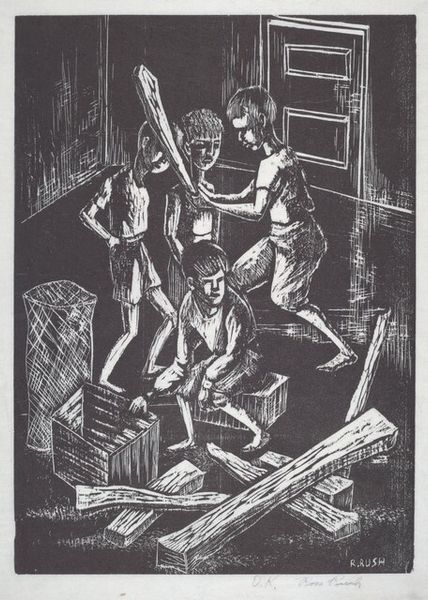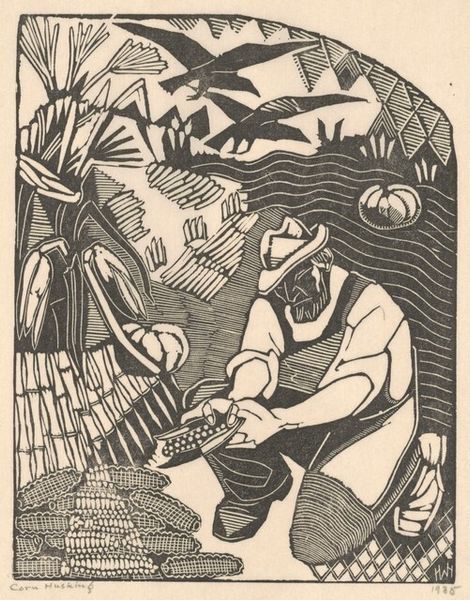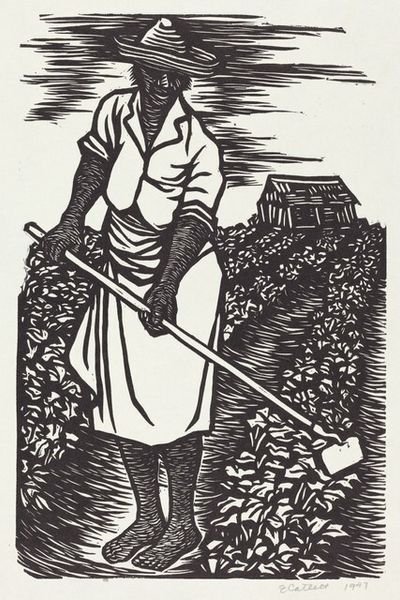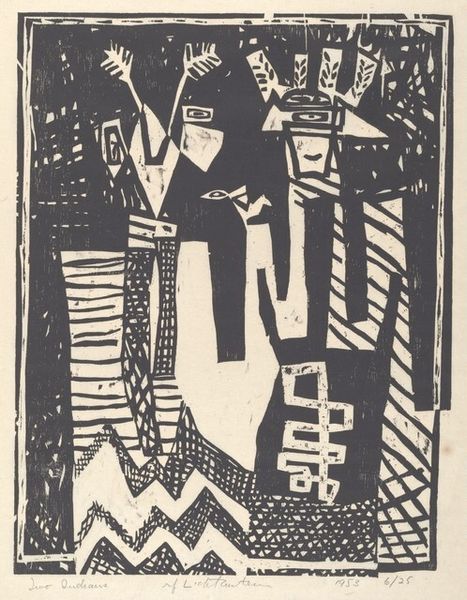
Dimensions: image: 44.8 x 24.8 cm (17 5/8 x 9 3/4 in.) sheet: 51.4 x 29.2 cm (20 1/4 x 11 1/2 in.)
Copyright: National Gallery of Art: CC0 1.0
Curator: This is Antonio Frasconi’s "Self-Portrait" from 1952. It is a woodcut print rendered in stark black and white, a compelling example of Expressionist style. Editor: My first impression is one of density. It feels almost claustrophobic, packed with information. The figure is centered but overwhelmed by the visual texture. Curator: It does offer a glimpse into Frasconi's world. As an artist deeply engaged in social commentary, the setting is as much about the environment that fostered his work. Consider the figures and landscape that appear behind him and his tools. Editor: Exactly. And it's fascinating how the tools become characters themselves. He’s depicted with his apron, a roller, prints, and the ink jars. These aren't just accessories; they define him as a craftsman, deeply immersed in the labor of artmaking. Curator: Frasconi wasn’t just concerned with aesthetics; he also had a clear political stance. During the McCarthy era, for instance, his art became a tool for social change. So the scene isn’t just Frasconi, but an implicit suggestion about the artist’s place in society. Editor: Absolutely. You see this woodcut process itself mirrors that sentiment, right? The way the image is carved away, piece by piece. It speaks to his direct engagement with materials, it reflects a desire to peel back layers and expose truth through labor. Curator: There's a powerful intimacy in seeing an artist represent themself within the very machinery of their practice, embedded within the public square, with their tools present and visible. He wasn’t just creating in a vacuum, but actively responding to and participating in social issues. Editor: Seeing Frasconi depicted like this, within this busy setting of creation and action makes me feel there is a lot more going on than meets the eye. This is how we get art as social action. Curator: A beautiful testament to the power and social value of image-making, wouldn’t you agree? Editor: It surely is; there's a unique depth to experiencing art so evidently crafted with social purpose.
Comments
No comments
Be the first to comment and join the conversation on the ultimate creative platform.
